
 Data Structure
Data Structure Networking
Networking RDBMS
RDBMS Operating System
Operating System Java
Java MS Excel
MS Excel iOS
iOS HTML
HTML CSS
CSS Android
Android Python
Python C Programming
C Programming C++
C++ C#
C# MongoDB
MongoDB MySQL
MySQL Javascript
Javascript PHP
PHP
- Selected Reading
- UPSC IAS Exams Notes
- Developer's Best Practices
- Questions and Answers
- Effective Resume Writing
- HR Interview Questions
- Computer Glossary
- Who is Who
How to Create Gantt Chart in Excel
Gantt charts are effective tools for visualising project timetables, monitoring development, and effectively managing timescales. Learning how to create Gantt charts in Excel will greatly improve your project management abilities, whether you're a project manager, team leader, or an individual trying to plan and organise tasks.
This tutorial will walk you through the steps of making a Gantt chart in Microsoft Excel, a commonly used and functional spreadsheet programme. To follow along, you don't need any prior Excel or project management knowledge. By the end of this course, you will be equipped with the knowledge and abilities necessary to create your own Gantt charts, modify them to meet your unique requirements, and manage your projects successfully. So let's explore the world of Gantt charts and discover how you can use Excel to streamline project planning and tracking!
Creating Gantt Chart in Excel
Here we will first create an empty stacked chart, then add the data to the chart, and finally format the chart to complete the task. So let us see a simple process to learn how you can create a Gantt chart in Excel.
Step 1
Consider an Excel sheet where the data in the sheet is similar to the below image.
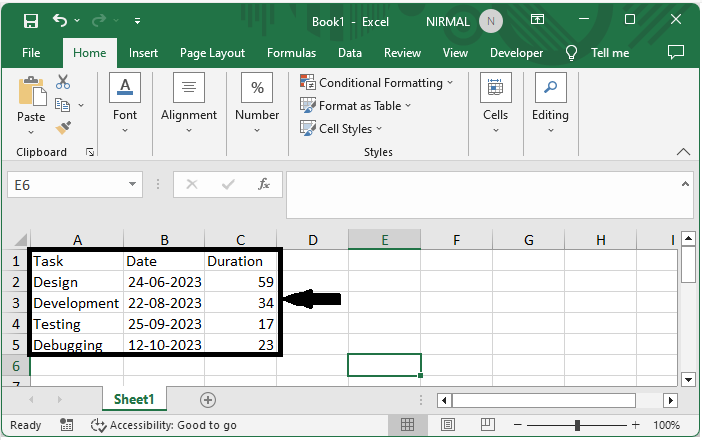
First, click on Insert and select Stacked Bar Chart.
Insert > Stacked Bar Chart.
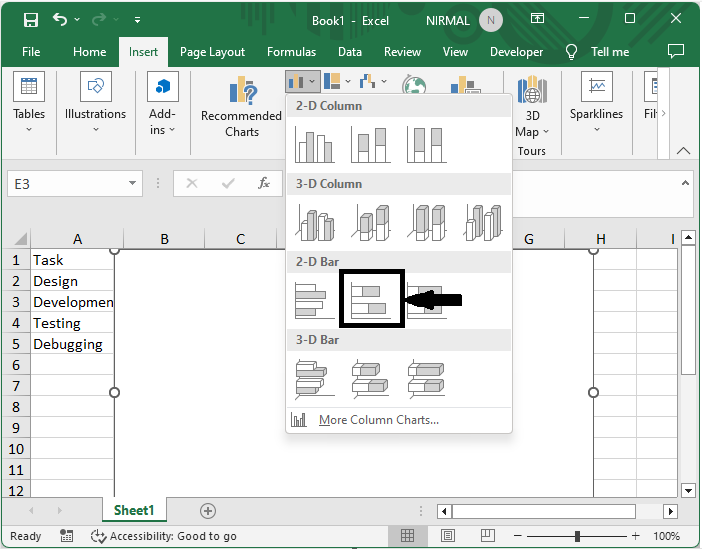
Step 2
Then right-click on the chart, click on select data, and click on add under legend entries. Then, for series name, click on cell B1, and for series values, select cells under cell B1 and click OK.
Right click > Select Data > Add > Series Name > Series Values > Ok.
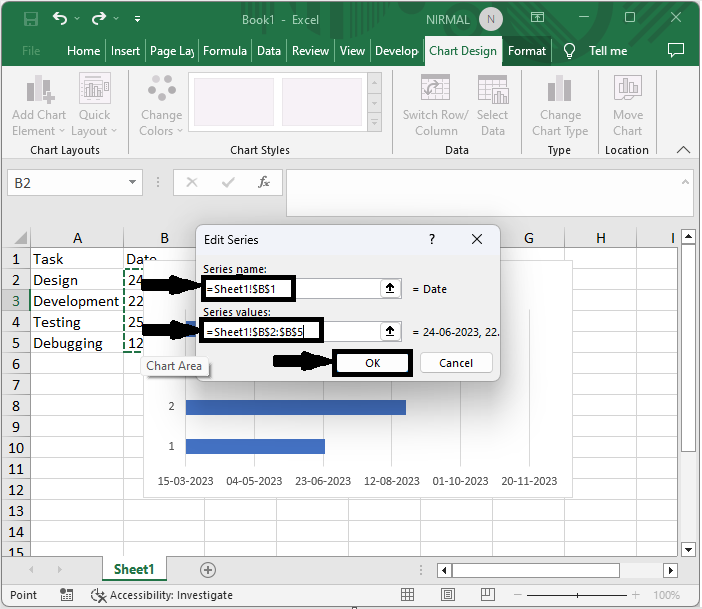
Then repeat the same step for the C column
Step 3
Then click edit under horizontal axis labels, select task names, and click OK.
Edit > Task Names > Ok > Ok.
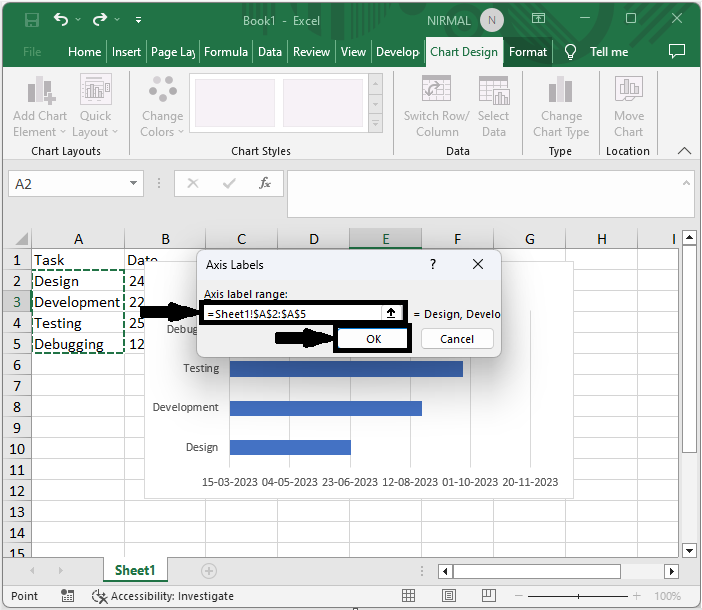
Step 4
Now right-click on the Y axis, select format axis, and check the box named Categorise in reverse order.
Right Click > Format Axis > Check Box.
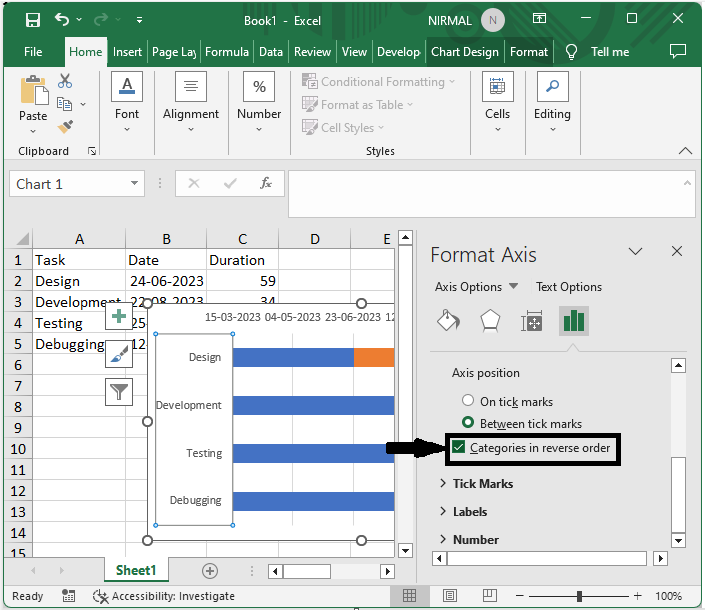
Step 5
Then right-click on the first series and select format data series, fill to no fill, and border to no line.
Right click > Format Data Series > No Fill > No Line
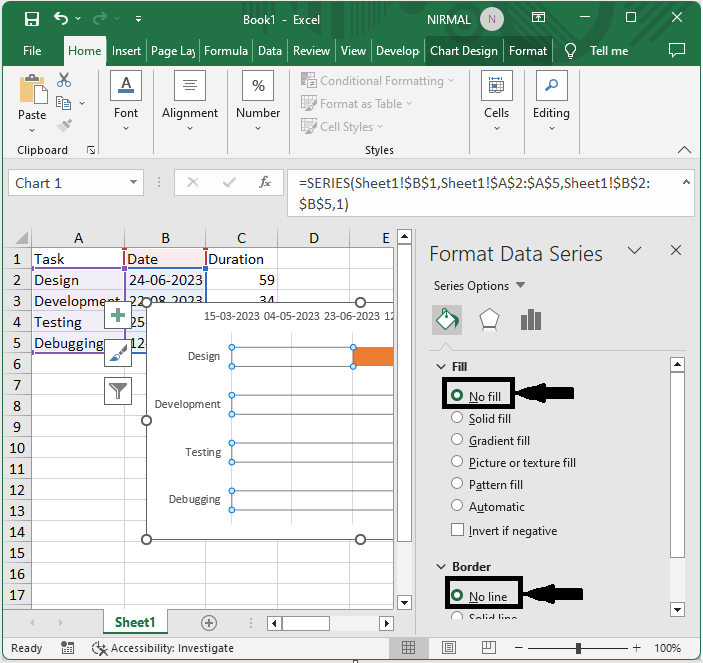
Step 6
Then right-click on cell B2 and select format cells, then click on general and note the value you see.
Right Click > Format Cells > General > Record.
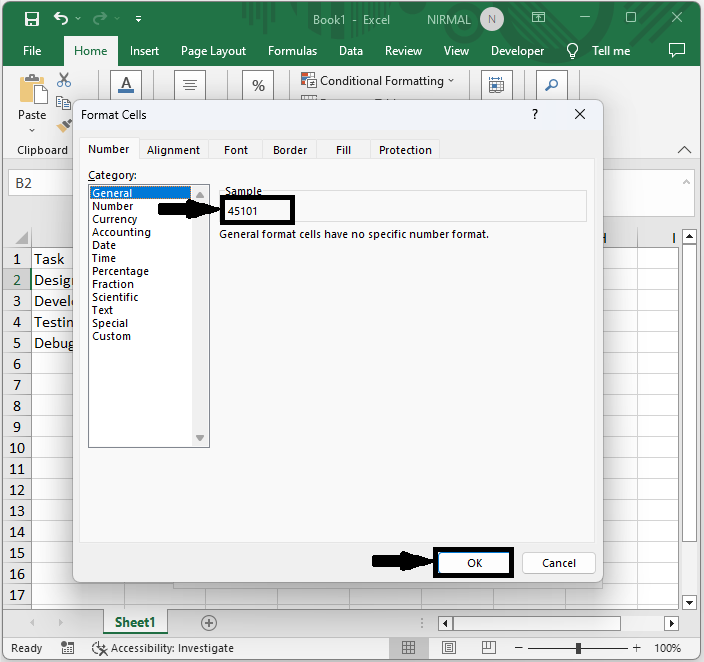
Step 7
Then right-click on the x axis and set the minimum value to the recorder value and the maximum value to any recorder value, and close the format to complete the task.
Right click > Format Axis > Minimum Value > Maximum Value.
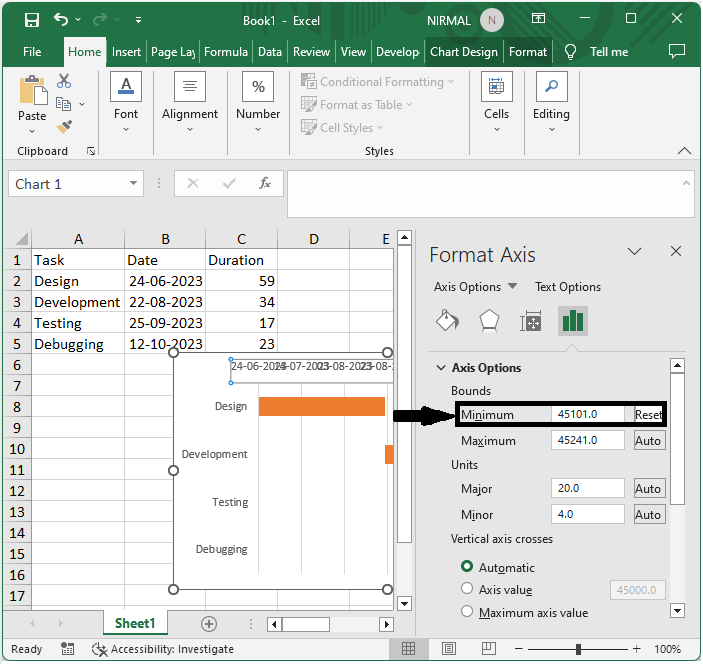
Conclusion
In this tutorial, we have used a simple example to demonstrate how you can create a Gantt chart in Excel to highlight a particular set of data.

